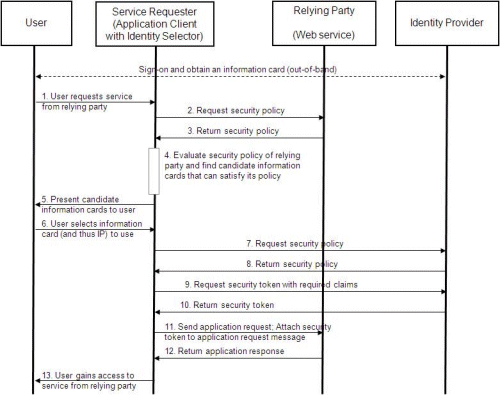John Fontana from Network World has picked up on one of the big deals in my life recently – Dick Hardt is joining our team at Microsoft. John Fontana posted this in Network World
Noted identity innovator Dick Hardt has agreed to join Microsoft to help the company shape its identity platform.
Hardt, one of the unique personalities in the busy identity community and a vocal Identity 2.0 advocate, will have the title “partner architect” and will be working on consumer, enterprise and government identity problems, he said on his blog.
Hardt said he was recruited by Microsoft because he is an “independent thinker.” Microsoft has benefited greatly from the work of other independent thinkers notably identity architect Kim Cameron, who has been instrumental in evolving the company's identity platform and its integration with other vendors, protocols and tools.
“I think the hiring of Dick Hardt is another proof point that Microsoft is serious about identity,” said Jackson Shaw, senior director of product management for Active Directory and integration solutions at Quest Software. “I believe it is also a further sign that Microsoft wants to avoid a Microsoft-centric ‘Passport’ type solution. They are, quite clearly, thinking much bigger – Azure, Geneva and CardSpace are on their way or already delivered so we know they are serious. Dick, along with Kim Cameron and others at Microsoft, will further help to ensure that Microsoft ‘thinks big’ in this important area.”
Hardt, whose reputation is that of an entrepreneur, said on his blog: “I view the opportunity to come in at a senior level and learn how big enterprise and big software works a great learning experience. I'm also excited about changes that are afoot at Microsoft such as Azure and to work beside a bunch of really smart people!”
He also said he relished the opportunity to come in and work with his “Foo Camp friends Jon Udell, Dana Boyd and of course Ray Ozzie.” Foo Camp is an annual hacker event put on by O'Reilly Media.
Hardt, most recently the chair of Sxipper, a position he will retain, comes in at a time when Microsoft is working to marry its newly minted Geneva identity strategy with its services push.
Sxipper was a spin-off from Sxip Identity, where Hardt first began to gain notice in the identity community with his rapid-fire Identity 2.0 presentation. Sixp Identity developed a technology called Sxip Access, which Google used as the foundation of a single sign-on bridge to corporate directories. Sxip later sold the technology to Ping Identity.
In addition to his identity background, Hardt also has worked extensively with open source. He founded ActiveState in 1997 and developed tools for open source programming languages, and he ported the Perl programming language to Windows.
In February, he showed off for the first time his newest work to create “address book 2.0,” a social networking “flow application” that presents a user's contact data in context with what they are viewing on the Internet.

 “The award went to the OpenID Foundation and to Microsoft for their InfoCard initiative. These standards form the base for Identity 2.0, the so-called user-centric Identity Management.
“The award went to the OpenID Foundation and to Microsoft for their InfoCard initiative. These standards form the base for Identity 2.0, the so-called user-centric Identity Management. “Special prizes were given to two initiatives considered as groundbreaking by KCP.
“Special prizes were given to two initiatives considered as groundbreaking by KCP.

